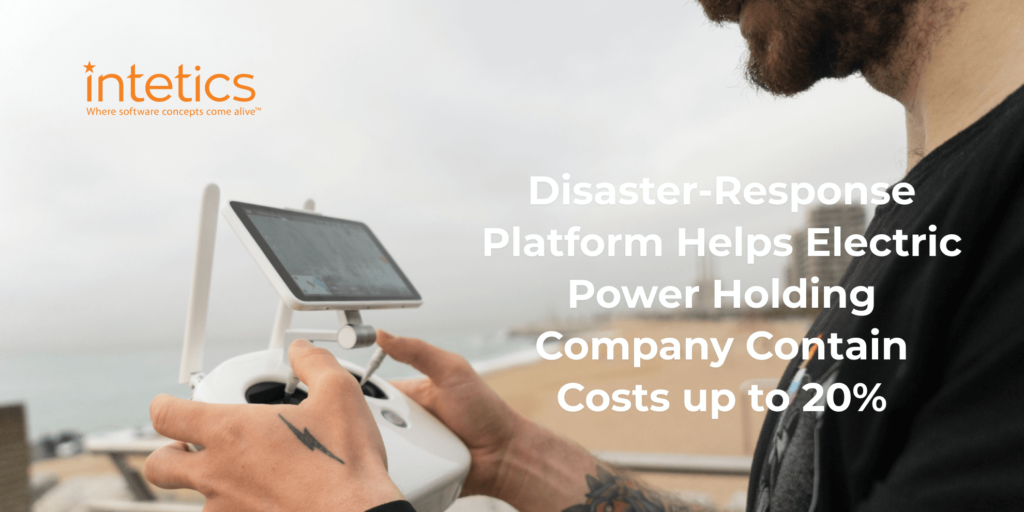
Over the last century, deaths from natural disasters have seen a significant decline. In the early-to-mid 20th century, yearly deaths from disasters were incredibly high, often spanning up to 1 million per year.
Now, though, fewer than 20,000 people die from natural disasters annually.
Even with years that have had high-impact events, we aren’t even close to reaching the numbers from the early 1900s. In fact, the death toll from natural disasters hasn’t been greater than 500,000 since the 1960s.
What is particularly impressive is that the world’s population has grown by billions of people over the last century — so, such a steep decrease in disaster mortality should be applauded.
But why is this happening?
Why has the world managed to get a handle on the repercussions of natural disasters? It is due to disaster response platforms. These programs simplify emergency responses by enabling:
- Secure communication
- Real-time situational awareness
- Multi-agency collaboration
These platforms give relief organizations the tools they need to help families faster before irreversible damage is done. Through disaster response problems, much more besides death can be avoided, including:
- Physical injuries
- Illness
- Trauma
- Homelessness
- Lack of sanitation
- Lack of food or water
Yet, with all the good that disaster response platforms do, relief is often costly for organizations. Take, for instance, 2020: global natural disasters had a $210 billion cost. Is it possible to contain costs without compromising the emergency services delivered to those in need? This is what Theorem Geo aimed to achieve.
Theorem Geo: a company that develops propriety software for storm response, shoreline management, meteorological impact analysis, predictive outage modeling, unmanned aerial systems, and vegetation management transmission and distribution.
Theorem Geo was developing an ecosystem in which 10+ user roles could communicate and work with each other during a disaster. The primary product audience includes drivers, workers, managers, and more – many of whom are not tech-savvy.
So, where did we come in? Theorem Geo contracted Intetics to create an automated, multifunctional, transparent platform to manage and coordinate thousands of employees and contractors after a disaster. Damage needed to be assessed and reported through multiple sources and systems. The developed system could act as a single assessment repository that provided an enterprise view of grid damage.
Of course, within such an ecosystem, the interaction between users would be complex, and it required our team to have a deep understanding of disaster response processes. Accordingly, the Intetics Remote In-Sourcing Team began the process by analyzing all the ecosystem’s roles, identifying the unique functions that each one would have. The team conducted interviews with end-users and used gleaned insights to justify the system’s design.
Now, let’s dive into the 5-step solution that the Intetics Remote In-Sourcing Team carried out:
- Step 1: The team created a Disaster Response Suite, which helps coordinate the efforts of management and field workers during a storm. System availability issues were solved through a Cloud server with web and mobile clients.
- Step 2: The team streamlined communication between vendors, utilities, suppliers, and responders through one system, which has mobile and web interfaces.
- Step 3: All communication was direct and simplified — whether it was between the native crew, non-native crews, all responders, or responder sub-sets.
- Step 4: The team created an information management tool, which visually tracks, analyzes, and displays KPIs. This enables the Client to align their organizational goals and strategies.
- Step 5: The UX was made as simple and effective as possible, primarily through making communication and collaboration easier.
Technologies used throughout the process included .NET Core, Angular 9+, PostgreSQL + PostGIS, and Xamarin. The team was composed of 5+ people, including a project manager, developers, and QA engineers.
The resulting multifunctional platform was extremely effective. Intetics’ Remote In-Sourcing Team was able to integrate a notification system, a database, and complex GIS components into a multifunctional decision-making platform with web and mobile interfaces. Core benefits include:
- 45% of processes were automated
- 20% of process management costs were reduced
- 100% of disaster response activities were covered
- Thousands of participants cooperated via web and mobile apps.
Because of this effective communication platform, fundamental logistic challenges have been bridged, and two-way communication channels have been established between field workers and management teams. Some services made possible by this platform include:
- Flight route optimization
- Flight completion analysis
- Helicopter damage points
- Landing zone analyses
- Outage analytics
- Road closure navigation
- Expert support and assistance services
- Video acquisition management
- Wildfire risk notification system
The benefits of such a system are impressive: not only do relief organizations and utility companies get to cut costs on process management, but disaster response communications are much simpler and more effective. This can reduce the negative impact of natural disasters even further; when response teams can communicate more clearly, help can be sent out to those in need much faster, thus saving lives.
